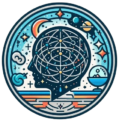Introduction
Uncertainty is an unavoidable part of life. From financial decisions to health concerns and social interactions, the human brain constantly evaluates risk. While we may think of risk as a rational calculation, neuroscience reveals that uncertainty triggers deep emotional and physiological responses.
Read More: Heuristics
The Evolutionary Roots of Risk Processing
Human beings evolved in environments filled with unpredictability—unseen predators, shifting weather, and fluctuating food sources. From an evolutionary standpoint, the ability to anticipate danger and respond to uncertainty increased survival odds. The brain’s threat-detection systems evolved to minimize risk by prioritizing safety and predictability (LeDoux, 1996).
This bias toward avoiding uncertainty persists today, even in non-threatening contexts such as financial decisions or social evaluations. The discomfort we feel when outcomes are unclear has evolutionary origins: it is the brain’s attempt to push us toward control and predictability.
The Neural Architecture of Uncertainty
Some of the neural architecture of uncertainty includes:
1. The Amygdala: Alarm System of the Brain
The amygdala is central to processing fear and threat. It rapidly assesses environmental cues and generates emotional responses before conscious awareness (LeDoux, 1996). When uncertainty arises, the amygdala becomes hyperactive, signaling potential danger even in ambiguous situations (Herry et al., 2007). This response prepares the body for fight-or-flight reactions, releasing stress hormones like cortisol and adrenaline.
2. The Prefrontal Cortex: Rational Decision-Making
The prefrontal cortex (PFC), particularly the dorsolateral and ventromedial regions, is responsible for planning, judgment, and weighing future outcomes. It modulates emotional responses generated by the amygdala, helping us evaluate risks more logically (Bechara et al., 2000). In uncertain contexts, the PFC works to integrate emotional and cognitive information to determine whether to act or wait.
However, under high stress or prolonged uncertainty, the PFC’s regulatory capacity weakens. This explains why chronic anxiety or fear impairs rational decision-making and leads to impulsive choices (Arnsten, 2009).
3. The Anterior Cingulate Cortex: Detecting Conflict
The anterior cingulate cortex (ACC) monitors conflict between potential outcomes and expectations. When decisions involve ambiguity—such as uncertain rewards or moral dilemmas—the ACC becomes active, signaling that more information is needed before acting (Shackman et al., 2011). This neural alert contributes to the uneasy feeling of indecision.
4. The Insula: Interoception and Emotional Awareness
The insula integrates internal body sensations with emotional awareness. It generates the “gut feeling” associated with uncertainty or risk. When the brain anticipates potential loss or danger, the insula’s activation correlates with subjective anxiety (Paulus & Stein, 2006). In gamblers or investors, greater insula activation predicts risk aversion.
5. The Striatum and Dopamine: Anticipating Reward
The striatum, a dopamine-rich region, plays a major role in processing rewards and expectations. When outcomes are uncertain but potentially rewarding, dopamine levels fluctuate to signal prediction errors—differences between expected and actual outcomes (Schultz, 2016). This mechanism underlies both learning and risk-taking behavior.
Uncertainty, Stress, and the Brain
Uncertainty triggers physiological stress responses similar to those activated by direct threats. The hypothalamic-pituitary-adrenal (HPA) axis releases cortisol, preparing the body for potential challenge. However, chronic exposure to uncertainty—such as economic instability or ambiguous social feedback—can dysregulate this system, leading to anxiety, insomnia, and reduced cognitive flexibility (McEwen, 2007).

A study by Grupe and Nitschke (2013) found that uncertainty increases anticipatory anxiety more than known threats. When people know a negative outcome is coming, they can prepare. But when the timing or likelihood is unknown, the brain remains in a prolonged state of vigilance. This explains why uncertainty can feel worse than predictable stress.
Cognitive Biases in Risk Perception
Human risk perception is shaped not only by neural mechanisms but also by cognitive biases. Behavioral economics and psychology have documented predictable patterns in how people misjudge risk.
- Loss Aversion: People weigh potential losses more heavily than equivalent gains (Kahneman & Tversky, 1979). Neural imaging studies link loss aversion to greater amygdala activation during risky decisions (De Martino et al., 2010).
- Optimism Bias: Despite a natural fear of uncertainty, humans also tend to underestimate personal risk. The optimism bias, mediated by the PFC, encourages perseverance and goal pursuit (Sharot, 2011).
- Ambiguity Aversion: People prefer known risks over unknown probabilities—a phenomenon first identified by Ellsberg (1961). Neuroscientific research shows that ambiguity activates the amygdala and insula, producing discomfort that drives avoidance (Huettel et al., 2006).
These biases highlight how emotion and cognition interact in risk processing. The brain seeks both accuracy and comfort, often sacrificing one for the other.
The Reward–Risk Balance
The interplay between risk and reward lies at the heart of decision-making. Dopaminergic signaling in the striatum encourages exploration when potential rewards outweigh risks. For instance, gambling or entrepreneurship involves activating neural reward circuits even amid uncertainty.
Research by Bechara et al. (2000) using the Iowa Gambling Task demonstrated that patients with ventromedial prefrontal cortex damage continued making risky choices despite losses, showing the PFC’s critical role in integrating emotional feedback into decision-making.

Similarly, Platt and Huettel (2008) noted that moderate levels of uncertainty can be stimulating, promoting learning and adaptability. The brain’s response to risk is thus not inherently negative—it drives curiosity, exploration, and innovation when balanced with control.
The Role of Dopamine in Uncertainty
Dopamine, often associated with pleasure, is more accurately linked to anticipation and motivation. During uncertain reward conditions, dopamine neurons fire in response to potential outcomes rather than guaranteed ones (Schultz, 2016). This system encourages persistence and exploration when success is unpredictable.
However, chronic exposure to unpredictable rewards, as seen in gambling or social media use, can hijack this system, leading to compulsive behaviors. The “dopamine loop” of anticipation and intermittent reinforcement explains why uncertainty can be both stressful and addictive.
Managing Uncertainty
While uncertainty cannot be eliminated, research suggests several strategies to reduce its psychological burden and enhance cognitive flexibility.
1. Mindfulness and Emotional Regulation
Mindfulness practices decrease amygdala reactivity and strengthen PFC control, enhancing tolerance for ambiguity (Hölzel et al., 2011). By observing thoughts without judgment, individuals reduce emotional reactivity to uncertain outcomes.
2. Cognitive Reappraisal
Reframing uncertainty as opportunity rather than threat engages the dorsolateral PFC, reducing anxiety and improving decision-making (Gross, 2015). Cognitive-behavioral therapies utilize this mechanism to help patients manage worry and risk aversion.
3. Predictability and Routine
Introducing small, predictable routines provides a sense of control that buffers against the stress of the unknown. Behavioral consistency reduces cortisol levels and stabilizes the HPA axis (McEwen, 2007).
4. Incremental Exposure
Gradually exposing oneself to uncertainty—through controlled challenges or decision-making tasks—builds tolerance over time. This method, akin to exposure therapy, retrains the brain to perceive uncertainty as manageable rather than catastrophic (Grupe & Nitschke, 2013).
Living with the Unknown
Uncertainty activates ancient neural circuits designed for survival, not modern complexity. Yet these same circuits also enable curiosity and growth. The goal is not to eliminate uncertainty but to cultivate resilience in its presence.
Through mindfulness, emotional regulation, and an understanding of how the brain interprets risk, individuals can navigate ambiguity with greater composure. Neuroscience reminds us that uncertainty is not merely a psychological challenge—it is a biological condition of life, deeply woven into our evolutionary fabric.
Conclusion
The brain’s response to uncertainty intertwines cognition, emotion, and physiology. The amygdala warns of threat, the prefrontal cortex weighs logic, and dopamine systems balance caution with curiosity. While these mechanisms once protected our ancestors from predators, they now influence everything from financial decisions to personal relationships.
Learning to coexist with uncertainty—by understanding its neural underpinnings—empowers us to make wiser, calmer choices. As research continues, the frontier of cognitive neuroscience may help us transform uncertainty from an enemy into a teacher.
References
Arnsten, A. F. T. (2009). Stress signaling pathways that impair prefrontal cortex structure and function. Nature Reviews Neuroscience, 10(6), 410–422. https://doi.org/10.1038/nrn2648
Bechara, A., Damasio, H., Damasio, A. R., & Anderson, S. W. (2000). Insensitivity to future consequences following damage to human prefrontal cortex. Cognition, 50(1–3), 7–15. https://doi.org/10.1016/S0010-0277(00)00074-0
De Martino, B., Camerer, C. F., & Adolphs, R. (2010). Amygdala damage eliminates monetary loss aversion. Proceedings of the National Academy of Sciences, 107(8), 3788–3792. https://doi.org/10.1073/pnas.0910230107
Doya, K. (2008). Modulators of decision making. Nature Neuroscience, 11(4), 410–416. https://doi.org/10.1038/nn2077
Ellsberg, D. (1961). Risk, ambiguity, and the Savage axioms. Quarterly Journal of Economics, 75(4), 643–669.
Grupe, D. W., & Nitschke, J. B. (2013). Uncertainty and anticipation in anxiety: An integrated neurobiological and psychological perspective. Nature Reviews Neuroscience, 14(7), 488–501. https://doi.org/10.1038/nrn3524
Gross, J. J. (2015). Emotion regulation: Current status and future prospects. Psychological Inquiry, 26(1), 1–26. https://doi.org/10.1080/1047840X.2014.940781
Herry, C., Bach, D. R., Esposito, F., Di Salle, F., Perrig, W. J., Scheffler, K., Lüthi, A., & Seifritz, E. (2007). Processing of temporal unpredictability in human and animal amygdala. Journal of Neuroscience, 27(22), 5958–5966. https://doi.org/10.1523/JNEUROSCI.5218-06.2007
Hölzel, B. K., Lazar, S. W., Gard, T., Schuman-Olivier, Z., Vago, D. R., & Ott, U. (2011). How does mindfulness meditation work? Proposing mechanisms of action from a conceptual and neural perspective. Perspectives on Psychological Science, 6(6), 537–559. https://doi.org/10.1177/1745691611419671
Huettel, S. A., Stowe, C. J., Gordon, E. M., Warner, B. T., & Platt, M. L. (2006). Neural signatures of economic preferences for risk and ambiguity. Neuron, 49(5), 765–775. https://doi.org/10.1016/j.neuron.2006.01.024
Kahneman, D., & Tversky, A. (1979). Prospect theory: An analysis of decision under risk. Econometrica, 47(2), 263–291. https://doi.org/10.2307/1914185
Kuhnen, C. M., & Knutson, B. (2005). The neural basis of financial risk taking. Neuron, 47(5), 763–770. https://doi.org/10.1016/j.neuron.2005.08.008
LeDoux, J. (1996). The emotional brain: The mysterious underpinnings of emotional life. Simon & Schuster.
McEwen, B. S. (2007). Physiology and neurobiology of stress and adaptation: Central role of the brain. Physiological Reviews, 87(3), 873–904. https://doi.org/10.1152/physrev.00041.2006
Paulus, M. P., & Stein, M. B. (2006). An insular view of anxiety. Biological Psychiatry, 60(4), 383–387. https://doi.org/10.1016/j.biopsych.2006.03.042
Platt, M. L., & Huettel, S. A. (2008). Risky business: The neuroeconomics of decision making under uncertainty. Nature Neuroscience, 11(4), 398–403. https://doi.org/10.1038/nn2062
Schultz, W. (2016). Dopamine reward prediction-error signalling: A two-component response. Nature Reviews Neuroscience, 17(3), 183–195. https://doi.org/10.1038/nrn.2015.26
Sharot, T. (2011). The optimism bias. Current Biology, 21(23), R941–R945. https://doi.org/10.1016/j.cub.2011.10.030
Shackman, A. J., Salomons, T. V., Slagter, H. A., Fox, A. S., Winter, J. J., & Davidson, R. J. (2011). The integration of negative affect, pain, and cognitive control in the cingulate cortex. Nature Reviews Neuroscience, 12(3), 154–167. https://doi.org/10.1038/nrn2994
Van der Bles, A. M., van der Linden, S., Freeman, A. L. J., & Spiegelhalter, D. J. (2020). The effects of communicating uncertainty on public trust in facts and numbers. Proceedings of the National Academy of Sciences, 117(14), 7672–7683. https://doi.org/10.1073/pnas.1913678117
Subscribe to PsychUniverse
Get the latest updates and insights.
Join 3,022 other subscribers!
Niwlikar, B. A. (2025, October 30). Brain and Uncertainty Through 5 Important Neural Architectures of It. PsychUniverse. https://psychuniverse.com/brain-and-uncertainty/



